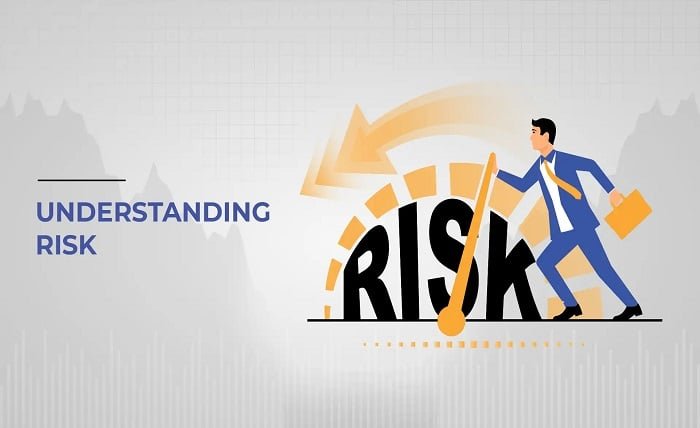Understanding Risk: A Comprehensive Guide to Managing Uncertainty

Introduction
In every aspect of life, whether personal or professional, understanding risk is essential for making informed decisions. Risk is an inherent part of any decision-making process, from investing in stocks to launching a new business venture. Without a clear understanding of risk, individuals and organizations can make poor decisions that lead to significant losses. This blog post delves deep into the concept of understanding risk, exploring its various dimensions and providing practical strategies for managing it effectively.
What is Risk? A Fundamental Overview
Understanding risk begins with defining what risk actually is. In simple terms, risk is the potential for loss or harm when an outcome is uncertain. This uncertainty can arise from various factors, such as financial markets, economic conditions, or even personal choices. By understanding risk, individuals can better anticipate potential outcomes and take steps to mitigate negative consequences. Whether in finance, business, or everyday life, understanding risk allows for more calculated decisions and a more balanced approach to uncertainty.
Types of Risk: Identifying Different Forms of Uncertainty
When it comes to understanding risk, it’s important to recognize that not all risks are the same. There are several types of risk, each with its own characteristics and implications. Financial risk, for instance, involves the possibility of losing money on investments, while operational risk pertains to the potential for failures in business processes. By understanding these different types of risk, individuals and organizations can tailor their risk management strategies to address specific challenges. This section will explore the various forms of risk, including market risk, credit risk, and operational risk, among others.
The Role of Risk in Decision-Making
Understanding risk is particularly crucial in the context of decision-making. Whether you’re an investor deciding on a portfolio allocation or a business leader planning a new product launch, understanding the risks involved is key to making sound decisions. Risk influences the potential rewards and can dictate the success or failure of a decision. By understanding risk, decision-makers can weigh the potential benefits against the possible downsides and choose the best course of action. This section will discuss how risk assessment and management play a pivotal role in the decision-making process.
Risk Assessment: Evaluating Potential Threats
Risk assessment is a critical component of understanding risk. It involves identifying potential risks and evaluating their likelihood and impact. This process helps individuals and organizations prioritize risks and allocate resources to manage them effectively. Understanding risk through thorough assessment allows for a proactive approach to risk management, where potential threats are addressed before they materialize. Techniques such as risk matrices and scenario analysis are commonly used in risk assessment to quantify and evaluate risks systematically.
Risk Management Strategies: Mitigating Negative Outcomes
Once risks have been assessed, the next step in understanding risk is to develop strategies for managing those risks. Risk management involves implementing measures to reduce the likelihood of negative outcomes or to minimize their impact if they do occur. Understanding risk management strategies is essential for anyone looking to safeguard their interests against potential losses. This section will explore various risk management techniques, including diversification, hedging, and insurance, and how they can be applied in different contexts to manage risk effectively.
The Psychology of Risk: How Perception Influences Decision-Making
Understanding risk is not just about evaluating external factors; it’s also about recognizing how perception influences decision-making. People often perceive risk differently based on their experiences, biases, and emotional states. This can lead to overestimating or underestimating risks, which in turn affects decisions. By understanding the psychological aspects of risk, individuals can make more objective decisions and avoid common pitfalls. This section will delve into the cognitive biases that impact risk perception and how they can be managed to improve decision-making.
Risk Tolerance: Assessing Your Comfort with Uncertainty
Understanding risk also involves knowing your own risk tolerance. Risk tolerance is the degree to which an individual is comfortable with uncertainty and potential losses. This varies from person to person and can influence decisions in areas like investing, business, and personal finance. By understanding risk tolerance, individuals can make decisions that align with their comfort levels and long-term goals. This section will discuss how to assess your risk tolerance and why it’s important to factor it into your decision-making process.
The Role of Risk in Investments
For investors, understanding risk is fundamental to achieving financial success. Every investment carries some level of risk, whether it’s the risk of losing money or the risk of missing out on potential gains. By understanding the risks associated with different types of investments, such as stocks, bonds, and real estate, investors can make informed decisions that balance risk and reward. This section will explore the different types of investment risks and how they can be managed through diversification and other strategies.
Risk in Business: Navigating Uncertainty in the Corporate World
In the business world, understanding risk is crucial for navigating the uncertainties that come with running a company. From market fluctuations to operational challenges, businesses face a wide range of risks that can impact their success. Understanding risk in a business context involves identifying potential threats, assessing their impact, and developing strategies to mitigate them. This section will discuss common business risks and how companies can manage them to ensure long-term stability and growth.
Risk in Everyday Life: Managing Personal Uncertainties
Risk is not limited to financial or business decisions; it also plays a significant role in everyday life. Understanding risk in personal contexts, such as health, relationships, and career choices, can help individuals make better decisions and avoid unnecessary hardships. By understanding the risks associated with different life choices, individuals can take proactive steps to manage uncertainties and lead a more balanced life. This section will explore how risk manifests in everyday situations and provide tips for managing personal risks effectively.
The Future of Risk Management: Emerging Trends and Technologies
As the world becomes more complex, understanding risk will continue to evolve. Emerging trends and technologies are transforming how we assess and manage risk, from advanced data analytics to artificial intelligence. Understanding these developments is crucial for staying ahead of potential threats and capitalizing on new opportunities. This section will discuss the future of risk management, highlighting the latest trends and how they are reshaping the way individuals and organizations approach risk.
Conclusion
Understanding risk is a vital skill that influences every aspect of decision-making. Whether in finance, business, or personal life, the ability to assess and manage risk can lead to more informed choices and better outcomes. By understanding the different types of risk, assessing them accurately, and implementing effective management strategies, individuals and organizations can navigate uncertainty with greater confidence. As we move into an increasingly complex world, understanding risk will only become more important, making it an essential area of focus for anyone looking to succeed in today’s environment.
Explore 9xflix com for a wide selection of movies and TV shows available for streaming and download. Discover the latest releases in various genres and enjoy entertainment at your fingertips.
FAQs
1. What is the importance of understanding risk?
Understanding risk is crucial for making informed decisions, whether in investing, business, or personal life. It helps anticipate potential outcomes and mitigate negative consequences.
2. How can I assess my risk tolerance?
Risk tolerance can be assessed by evaluating your comfort with uncertainty and potential losses. This assessment should consider your financial goals, time horizon, and personal preferences.
3. What are some common risk management strategies?
Common risk management strategies include diversification, hedging, and insurance. These techniques help reduce the likelihood of negative outcomes or minimize their impact.
4. How does perception influence risk decisions?
Perception can significantly influence risk decisions, as cognitive biases and emotional states can lead to overestimating or underestimating risks. Understanding these psychological factors is key to making objective decisions.
5. What are the emerging trends in risk management?
Emerging trends in risk management include the use of advanced data analytics and artificial intelligence. These technologies are transforming how risks are assessed and managed, offering new tools for navigating uncertainty.





